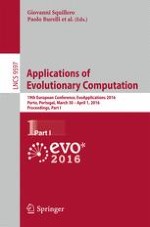2016 | OriginalPaper | Chapter
A Distributed Intrusion Detection Framework Based on Evolved Specialized Ensembles of Classifiers
Authors : Gianluigi Folino, Francesco Sergio Pisani, Pietro Sabatino
Published in: Applications of Evolutionary Computation
Publisher: Springer International Publishing
Activate our intelligent search to find suitable subject content or patents.
Select sections of text to find matching patents with Artificial Intelligence. powered by
Select sections of text to find additional relevant content using AI-assisted search. powered by
